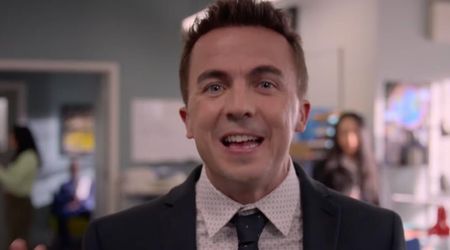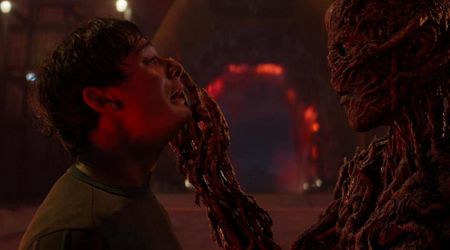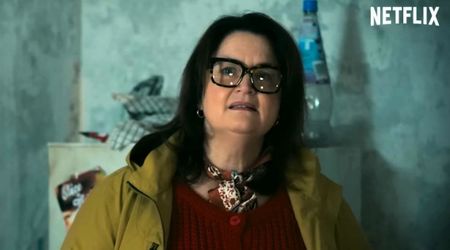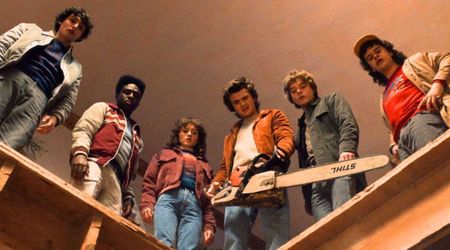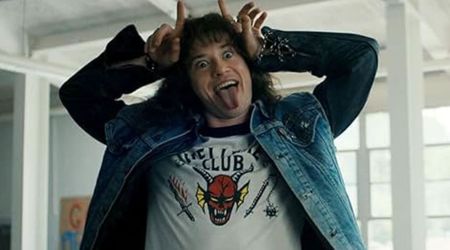'I'll Be Gone In The Dark' Finale Review: Did Golden State Killer become a monster after watching sister's rape?

A quarter of a century later, an unidentified killer — who wrecked hundreds of homes, raped more than 50 women and killed at least 10 people in California — was finally nabbed. The Golden State Killer is the name Michelle McNamara gave to him after she started investigating the crime and blogging about it. Titled ‘Walk into the Light’, the series finale of HBO's ‘I'll Be Gone In The Dark’ sheds light on the Letter to an Old Man, where she spelled out exactly how she would want him captured.
"After May 4, 1986, you disappear. Some think you died. Or went to prison. Not me..." she said. "One day soon, you’ll hear a car pull up to your curb, an engine cut out. You’ll hear footsteps coming up your front walk. The doorbell rings. No side gates are left open. You’re long past leaping over a fence. Take one of your hyper, gulping breaths. Clench your teeth. Inch timidly toward the insistent bell. This is how it ends for you."
Did it really end for him the way she predicted? The credit to bring him back into the spotlight from his safe space goes to Michelle and that was her biggest win, even though she wasn't there to see it. McNamara died in her sleep on April 21, 2016. At sundown on April 24, 2018, Californian authorities arrested Joseph James DeAngelo as the alleged Golden State Killer. The use of the killer's name coined by her was "proof of the impact of her work".

How was he finally found? With the help of genetic genealogy searching on GEDmatch, investigators identified distant relatives of DeAngelo — including family members directly related to his great-great-great-great-grandfather dating back to the 1800s. Michelle's voice plays in the background in the series finale: "The amazing thing about this DNA technology is that every three months it gets better. Within a year, we'll probably have the family tree." She may not have been there but she knew exactly how to find him.
Once he was caught, the victims were shocked to see how he was "living the suburban country life that he wrecked for so many other people." And the one question buzzing through minds was: What really made him do all this? What was his motive? What drove him towards that madness? Why did he wreck all those lives? So, who really was Joseph James DeAngelo and how did he become known as the Visalia Ransacker, East Area Rapist, Diamond Knot Killer, Original Night Stalker, and finally the Golden State Killer? Let's build a timeline.
Born on November 8, 1945, in Bath, New York, he was raised by his father, Joseph James DeAngelo Sr, a US Army Sergeant, and Kathleen Louise DeGroat. He grew up with two younger sisters and a younger brother. As a boy, he moved with his family to an army base in Germany. He was a "troubled child" whose family "struggled financially and moved frequently". In the documentary, his nephew Wes Ryland says, "My mother was... She was raped. In Germany. When she was seven years old. By two military officers or men in an airplane hanger." Guess who was watching? "Uncle Joe." He then takes a breath and adds, "He watched her getting raped. The very thing that happened to my mother is the very thing that he did to other women. I don't understand that. How sickening is that?"

In 1964, his parents divorced and Joe joined the Navy and served as a damage control man during the Vietnam War. In 1968, he goes to study police science at Sierra College in Rocklin, California. A year later in 1970, DeAngelo got engaged to his classmate Bonnie Jean Colwell, which "ended badly" and perhaps, was the event that sparked off the streak of madness. The breakup may have fueled his rage as he was reported to have told one of his offenders, "I hate you, Bonnie!"
He attended Sacramento State University, where he earned a bachelor's degree in criminal justice. In November 1973, he got hitched to Sharon Marie Huddle (who later changed her name to Loomis). In 1973, he became a police officer and was assigned to the burglary unit in Visalia, the same year the ransacking happened. Three years later, the ransacking ceased and Joe moved with Sharon to Auburn. He joined the police forced and served for three years from 1976 to 1979. The East Area attacks began that summer 30 miles south in Rancho Cordova.
In 1979, Joe was arrested for stealing a dog repellent and a hammer from the force. Post that, he was sentenced to six months probation and eventually sacked. Nick Willick, his former boss at Auburn Police Department, says in the documentary: "His nickname was Junk Food Joey. You know he would have a bag of potato chips or a candy bar or soft drink in his hand all the time."

Then, he became the Original Night Stalker as the crimes started in 1979 and suddenly stopped in 1981. That same year, the first of his three daughters was born. No murders occurred for the next five years until his last known victim, Janelle Cruz, in 1986. Joe's second daughter was born six months later. In the early 1990s, his wife moved out with their three daughters. Although Sharon was an attorney, the pair never legally split. With that, Michelle's predictions come true: "I think he is a middle-class guy who has a respectable job and you would never find out it was him."
Joe spent most of his time fishing and working the night shift as a mechanic at his supermarket distribution center. In March 2018, he retired and the following month, he was arrested. Melanie Barbeau, a high school social worker, says, "Having three daughters and a granddaughter... Knowing that he committed crimes against women.
What must be like that in his soul and his conscience?" She then added, "I also feel compassion towards his family. Their lives are changed forever."
So, why did he really do it? In the background of a crime con conference, the voice plays, "The only motive was to completely control a person that I found physically attractive. And keep them with me as long as possible. Even if it meant keeping their partners tied." What was his motive? That question still haunts many. Out of rage, frustration, or just pure fun, whatever it may have been, he ruined souls and destroyed families. Perhaps, that may never dawn onto him.

As Michelle said, "Murderers lose their power as soon as we know them. The hollow gap of his identity was really powerful to me. If you commit a brutal crime and just vanish, what you leave behind isn't just pain but absence. The great supreme blankness that triumphs over everything else."
On June 29, 2020, DeAngelo pleaded guilty to 26 charges, including 13 counts of first-degree murder and 13 counts of kidnapping. He also admitted to all East Area Rapist attacks, including those of Kris, Linda, Fiona and Gay and Bob. Directed by Liz Garbus, HBO's ‘I'll Be Gone In The Dark’ leaves you feeling hollow, wondering if you would ever be able to let all that DeAngelo did sink in and if you would ever be able to make sense of what he did.
Beautiful, raw, riveting with a ripple effect of trauma, the series finale will give you goosebumps... and leave you with echoes of Michelle's words: "'You’ll be silent forever, and I’ll be gone in the dark,' you threatened a victim once. Open the door. Show us your face. Walk into the light."

